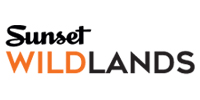
How to Enjoy Everything Zion Has to Offer Without the National Park Crowds
Few destinations are better equipped to accommodate dispersed camping than Utah.


Camping in treasured southern Utah destinations like Zion and Arches national parks has lately been more challenging than in years past, as millions of first-time campers seeking relief from pandemic-fueled monotony set the nation’s prized outdoor jewels in their crosshairs.
In all, more than 10 million households embarked on a camping trip for the first time in 2021, a surge that prompted National Park Service officials to incorporate entry reservation systems at select parks, including Zion, to compensate for the host of complications that can accompany foot and automotive congestion.
In response, seasoned campers of Zion National Park have recalibrated outdoor itineraries to include some of the Beehive State’s lesser-frequented alternatives. Few destinations are better equipped to accommodate close-proximity alternatives, after all, than a state boasting 22.8 million acres of Bureau of Land Management lands—about 42% of the state’s total area—in addition to its five national parks, 11 national sites, and 43 state parks.
With nearly one-third of today’s campers opting for non-designated campsites on public or private land, Utah is primed for adventure.
We pieced together a handful of our favorite camping and recreational options in the Zion vicinity that can provide everything southwest Utah has to offer without the reservation systems or discouraging droves of humanity.
Camp
- Toquerville Falls is a dreamlike oasis near La Verkin, a town just 20 miles to the west of Zion National Park. Getting there requires either a 6-mile hike or some serious 4×4 rock crawling (skid plates are a must) through arid desert, but the destination is an unmatched setting for dispersed camping. Some fire rings exist courtesy of previous campers, but there are no amenities, so pack in, pack out, go for a swim, and enjoy an undisturbed night under the stars.
- About 45 minutes southwest of Zion National Park—on BLM land—is Gooseberry Mesa, a sprawling canyon where visitors can camp, hike, or mountain bike along a canyon rim with spectacular views of Zion National Park’s imposing rock towers to the north and carved canyons and colorful desert below. Camping is primitive and amenities are nonexistent, but for $125 a night, groups of about six can enjoy one of the few Gooseberry Yurts (and pit toilets!). Each yurt comes equipped with bunk beds, a cook stove, a lantern, and a wood stove for warmth. But keep in mind: Guests must bring their own supplies.
- Camp creekside under a grove of trees at North Creek Dispersed Camping on Kolob Terrace Road, a pitstop approximately 20 minutes southwest of Zion National Park. No reservations are required, and space is usually abundant. For close proximity to the park, it doesn’t get much better.
- A short, 20-minute drive from Zion’s east entrance is Twin Hollows Canyon, where there are a handful of designated sites as well as dispersed options. A number of locations in the vicinity run alongside the East Fork of the Virgin River, so there’s no shortage of scenery. Amenities are scarce, so bring everything you intend to use. The nearby Belly of the Dragon cave is a must-see for adults and families alike.
- Just south of the Mt. Carmel Junction and about 30 minutes from Zion’s east entrance is the Old 89 dispersed camping area. The bit of road noise emanating from 89 is more than made up for by the beautiful surroundings of red rock and juniper groves. Fire pits are available, and for the remote worker, cell service is premium. Close proximity to Mt. Carmel, meanwhile, means gas stations and restaurants are just a short jaunt down the road. And for those who want to venture farther, Old 89 is just an hour from Bryce Canyon National Park.
Check Out
- Just on the Utah side of the Utah-Arizona border is Coral Pink Sand Dunes State Park, a sea of hiking, ATV, photography, and wildlife viewing opportunities near the town of Kanab that formed as far back as 15,000 years ago by the slow erosion of pink Navajo sandstone.
- Also in the Kanab region is Red Canyon, aka Peek-a-Boo Slot. This superb destination offers offroading, hiking, and canyoneering opportunities away from the dense crowds attracted by the region’s better known—or Instagram influencer-abused—destinations like Antelope Canyon.
- Moqui Cave, just 5 miles from Kanab, is a natural history museum featuring Indigenous and natural artifacts housed inside a cave once used by the Anasazi and Navajo peoples. Also included are artifacts and historical accounts of early Mormon settlers. Whether traveling alone or with a family, the museum offers attractions for everyone.
- Adjacent to the aforementioned Twin Hollows Canyon dispersed camping area is a man-made cave aptly known as the Belly of the Dragon. Created years ago as a water culvert to flow under Highway 89, natural erosion created, over time, a carved ripple effect in the sandstone that gave the site its appropriate moniker. The 1.8-mile (round trip) trail is easy for all ages, and kids will no doubt get a kick of meandering through a mystical esophagus.
- Less than 1 mile from the Moqui Cave is the wonderful Best Friends Animal Sanctuary, a 3,700-acre no-kill refuge for over 1,600 companion animals that range from cats and dogs to horses and pigs. Best Friends, which offers select adoptions, has saved tens of thousands of displaced or unwanted animals at the refuge, allowing those that aren’t adopted to live out peaceful lives. Enjoy a visit of dog walking, horse feeding, or cat petting, and find out how you can get involved.
There’s never been a better time to get out and enjoy everything that the Zion area has to offer. Happy camping, and we hope to see you out there!
Read the Current Issue Here!
Get one year of Sunset—and all kinds of bonuses—for just $29.95. Subscribe now!
